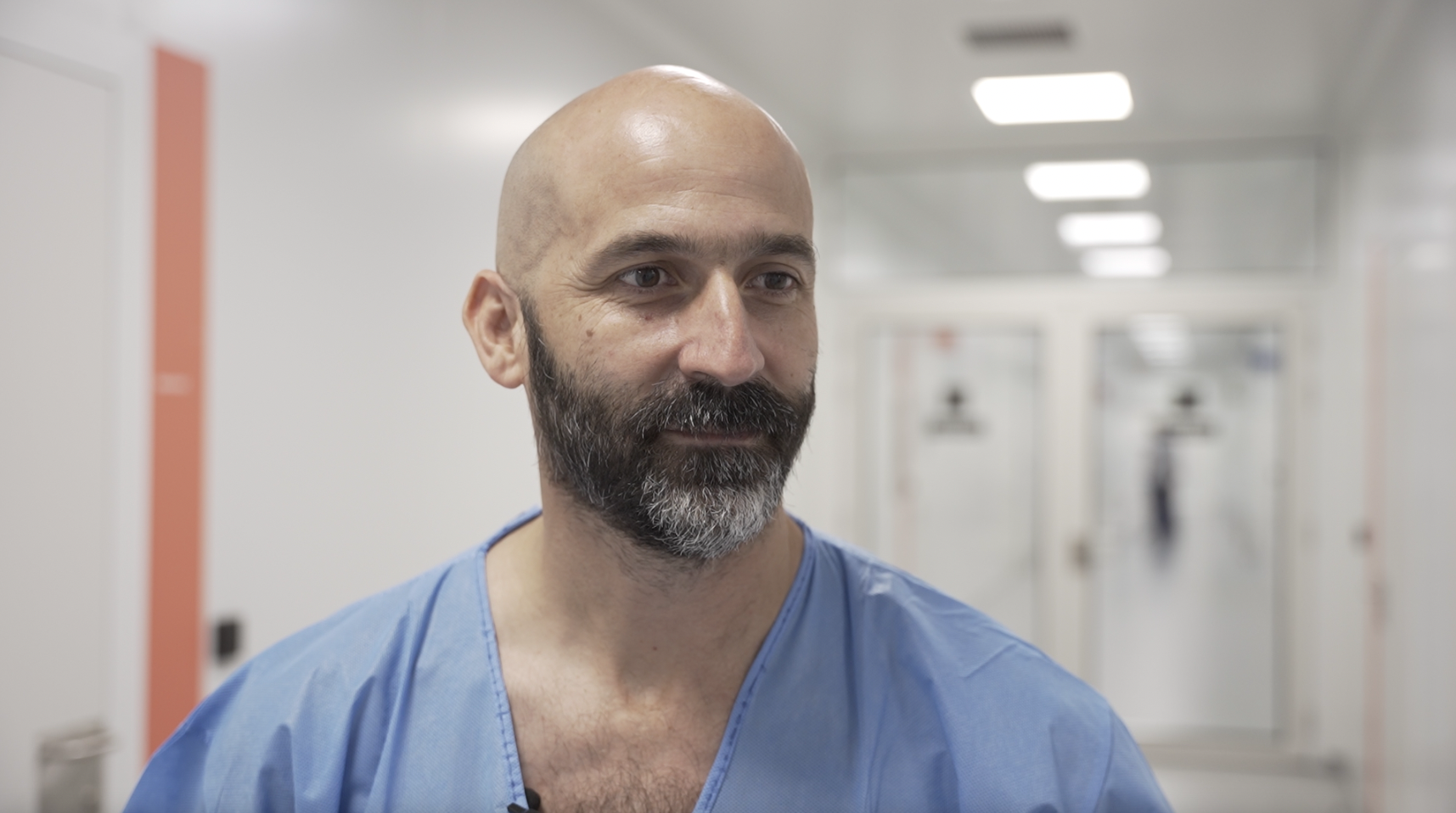Dr. Lluís Peri is a Urologist at the Hospital Clínic de Barcelona and Head of the Reconstructive Urology Area. Together with Dr. Mireia Musquera, he has led the first Rob Surgical robot surgeries on patients at the Hospital Clínic in Barcelona. Nephrectomies performed with the Bitrack surgical robot have been carried out satisfactorily and no adverse events have been reported. After the success of the interventions, we discussed with Dr. Peri his vision of minimally invasive surgery and the advances in robotics in his specialty area.
How has surgery changed in recent years?
In the last two decades surgery has evolved towards a new paradigm shift. There is no longer the idea of the great surgeon and the great incision, the best surgeon is the one who can perform a less invasive surgery, which implies a smaller cut. For this, it is necessary to have more technology: laparoscopy, robotic surgery, minimally invasive surgery in general.
What is minimally invasive surgery?
Minimally invasive surgery is understood as operating on someone through the smallest possible incision to achieve the least amount of aggression in the abdomen. It can be performed through incisional laparoscopy or through natural orifices.
What advances does the Bitrack surgical robot facilitate in your specialty area?
Bitrack provides us with a new surgical robot that allows us to perform surgeries with great ease using instruments that we already have: laparoscopy cameras, generic trocars… we do not need instruments specially designed for the robot. It is an extremely easy robot to assemble and to assemble and disassemble.
Does working with Bitrack make your job as a surgeon easier?
Yes, it allows performing some maneuvers that by laparoscopy are much more complex.
How was your experience performing the first operations of the Bitrack robot with live humans?
It has been an enormous satisfaction to be able to perform the first surgeries and that they have been completed without any complications. We have shown that it is a very safe surgical robot.
What advantage does 3D vision bring during surgery?
With 3D surgery we operate by laparoscopy with the same conditions that we would operate in open surgery. That is, with a sense of depth. This facilitates the precision of the movements and injuries or imprecise maneuvers related to the lack of depth sensation are avoided.
Thank you very much for your time, Dr. Peri, and congratulations on the success of the first interventions on patients.
The Bitrack surgical robot facilitates the work of surgeons. The functionality of operating in a hybrid system allows the professional to make the most of their medical skills, with extreme precision of intervention.
